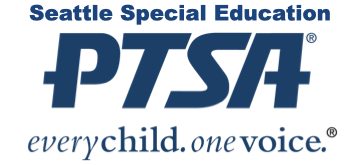by Jana Parker
Better Access to Services and a Step Toward Equity
Eliminating the cap on special education funding is a necessary step toward more equitable access to services across Washington State. But increased funding alone won’t solve everything—districts also need to shift their mindset. Right now, many students who require special education services are often either denied evaluations altogether or evaluated with tools and processes that are not appropriate. This may also happen due to overwhelmed staff and large caseloads, or a lack of appropriate training. This result is less data, fewer identified needs, and ultimately, fewer services—especially for students from low-income households, immigrant families, single-parent homes, and, in particular, disabled BIPOC students.
The reality we’ve been living as parents and advocates is one where minimal evaluations mean fewer services. It’s been a form of survival—like a Hunger Games scenario—where the more marginalized your family is, the harder it is to access support for your child. The proposed legislation to eliminate the special education funding cap is essential. It ensures that once students are identified as needing special education services, districts actually receive the funding and support students are entitled to, no matter where they live or what their district’s budget looks like.
Equity Requires More Than Money
True educational equity goes beyond increased funding. As advocates working toward systemic change at both the district and state levels, we want to see sustainable progress, not just for our children, but for those who come after them. We want to know that in the near future, students will have the mental health support, inclusive classrooms they need, and will graduate ready for life after high school.
School districts need to stop treating special education with a triage strategy. As a former RN, I know that triage is for emergencies. We need to move out of emergency mode. Districts must shift to need-based decision-making and respect parents as true partners in the process. Financial stability for public schools is foundational, but it’s only one piece of a much bigger picture.
Support for Teachers and Staff
With this increased funding, districts now have the opportunity—and responsibility—to invest in students by investing in the adults who support them. That means lowering caseloads for teachers and specialists, expanding inclusionary practices in everyschool, offering timely mental health and behavioral supports, and ensuring consistent paraprofessional support. These changes will lead to stronger educational outcomes for students with disabilities and more sustainable working conditions for educators.
Accountability Must Accompany Funding
Of course, funding without accountability won’t get us where we need to go. OSPI’s special education investigation department is currently understaffed and under-resourced. That lack of capacity limits their ability to enforce students’ right to a Free Appropriate Public Education (FAPE). We’ve seen troubling examples of decisions coming from both OSPI and private investigators that raise serious concerns.
We also need to recognize that not every family has access to an educational advocate or attorney. The Office of the Educational Ombuds at the Governor’s office (OEO) plays a vital role, but it’s small and stretched thin. That support system must grow if we’re serious about education equity.
This Is About Civil Rights
Students’ civil rights are human rights. This long-overdue step toward removing the special education funding cap is about making sure every disabled student receives the support they are entitled to.
